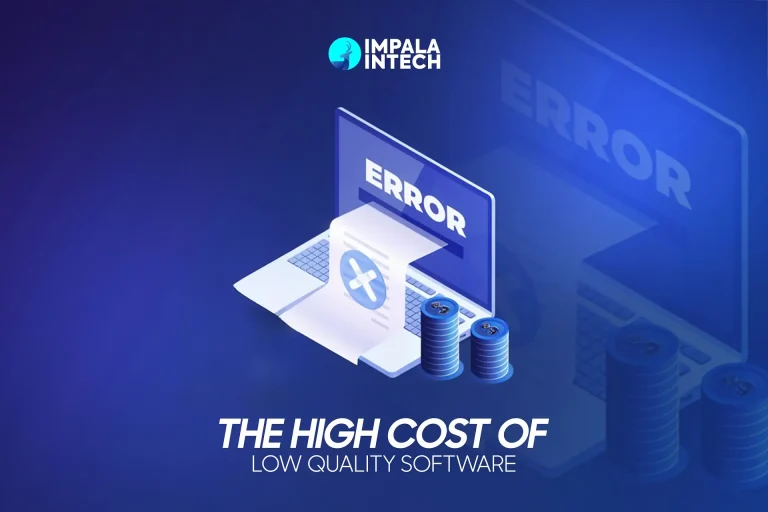
Four different clients. Four completely different needs. Yet, they all came to us with one thing in common—they didn’t want to build everything in-house. They were looking for something leaner, smarter, and faster. Something like… a nearshore development team that delivers.
So, they reached out. Some were scaling fast. Some were stuck. Others just wanted to get a solid product out without hiring 12 full-time developers. No fluff, no sales pitches—just real companies looking for real help.
What happened next? Let’s say things got interesting. Here’s how we stepped in, rolled up our sleeves, and built with them, not just for them.
Why Nearshore Models Matter More Than Ever
Remote work is now the default. A 2023 report from Owl Labs found that 58% of tech employees work remotely at least part-time. That’s changed everything about hiring. Companies no longer hire locally—they look everywhere. However, global hiring comes with its own set of challenges: time zone delays, cultural misalignment, and managing teams that are difficult to lead. We even recently discussed 10 benefits of nearshore outsourcing.
What worked in 2018 doesn’t cut it now. Fast-moving teams need quick feedback, real-time syncs, and shared priorities. Time zone overlap and cultural fit are no longer “nice-to-have.” They’re expected. If your developers are sleeping while your project managers are working, you’re already behind.
“We didn’t need someone cheaper. We needed someone who gets us.”
— Sarah Newman, Project Manager, U.S. SaaS Company
What Is a Nearshore Model?

A nearshore model is not just about hiring developers in a nearby country. It’s about how you work together, how you communicate, and how the team fits into your process. Geography matters—but engagement matters more.
Unlike nearshore outsourcing or offshoring, where teams often work in silos, a nearshore model can feel like an extension of your staff. It focuses on time zone compatibility, language clarity, and daily collaboration.
Let’s break it down:
| Model | Time Zone Overlap | Engagement Level | Best For |
|---|---|---|---|
| Offshoring | Low | Transactional | Large operations, cost-cutting |
| Outsourcing | Medium–Low | Task-based | Repetitive or scoped tasks |
| Staffing | Medium–High | Individual roles | Skill gaps, temporary help |
| Nearshoring | High | Collaborative | Agile builds, product teams |
“We realized we didn’t just need more developers—we needed developers who were on the same page.”
— Luis Ortega, CTO, AI HealthTech Startup
5 Nearshore Engagement Models That Deliver
Different companies need different models. A fast-moving startup won’t work the same way as a bank. Below are five tried-and-tested models that we’ve seen succeed, depending on your goals, timelines, and the level of in-house support you already have.
1. Dedicated Nearshore Team
This is a full-time team that works only for you. They join your standups, work your hours, and use your tools. Over time, they gain deep knowledge of your systems and users.
Best for:
- Long-term product development
- Scaling internal teams
- Digital transformation
Why it works:
You gain complete control, deep focus, and high accountability without the need for full-time hires.
2. Agile Pod Model
A small, cross-functional unit that includes developers, QA, and a project manager. The pod works in sprints and delivers features fast. It’s perfect for teams that need to test, ship, and iterate quickly.
Best for:
- Startups
- MVPs
- Rapid growth stages
Why it works:
Pods are flexible, efficient, and require minimal management from your side.
3. Staff Augmentation
You add one to three engineers to fill short-term gaps in skills or bandwidth. These devs work directly with your internal team, often blending in seamlessly.
Best for:
- Teams with short-term needs
- Special skill shortages
- Sudden spike in workload
Why it works: It’s fast, low-commitment, and gives you exactly what you need, without hiring.
4. Project-Based Nearshore Team
This model is ideal when the scope and deadline are clearly defined. You set the requirements, and the team builds exactly what’s needed—nothing more, nothing less.
Best for:
- One-off builds
- Legacy refactoring
- Budget-sensitive projects
Why it works: Clear timelines, precise results. No surprises.
5. Hybrid Onsite + Nearshore Model
This model combines a small on-site presence (such as a tech lead or project manager) with a larger nearshore team working remotely. It gives you the best of both worlds.
Best for:
- Enterprise solutions
- Complex multi-team coordination
- Projects needing face-to-face time
Why it works:
It maintains strong relationships while reducing overall costs.
Why the Model Matters More Than the Country

You can hire a nearshore team in Mexico, Colombia, or Argentina. But the model shapes your results, not the flag. Companies that choose the right nearshore software development partner get better communication, faster cycles, and real traction. Those that don’t? They often spend more time fixing issues than building products.
If you’re thinking about nearshoring, don’t start with where. Start with how. The model will define the team’s role, their responsibility, and your success.
Need help choosing a model? We’ve worked with startups, SaaS companies, and enterprises—each one needed something different. We’ll show you what works. Let’s talk.
5 Models We Developed at Impala InTech
Over the past few years, our team at Impala InTech has worked with dozens of companies across industries. Each had different goals, budgets, and timelines. What stayed consistent was the need for a flexible and efficient delivery model. That’s why we didn’t stick to one approach—we built and refined five tailored models to fit real-world needs.
These models weren’t based on theory. They were built through projects. Feedback, deadlines, and cross-border teams shaped them. Below are the five models we have developed—each grounded in results and trusted by clients across the United States, Canada, and Europe.
1. The Nearshore Software Development Core Model
This was the first model we created. One of our early fintech clients required a whole product team, including engineers, QA specialists, and designers—all working in their respective time zones. We built a nearshore mobile app unit based in Latin America that joined their Slack, attended daily scrums, and pushed code every sprint.
They wanted deep collaboration without the risk of misalignment. The nearshore team felt like an extension of their in-house staff. That project ran for 19 months and delivered three successful product launches. They later told us, “It never felt like outsourcing. They were just our team.”
2. The Onshore-Offshore Hybrid Wave
Some companies want global talent without losing touch. That’s why we created the Onshore-Offshore Hybrid Wave—a blend of local leadership and offshore delivery. A logistics client from Germany used this model to build their internal routing engine. We placed a tech lead onsite with them for six months, then expanded the team offshore in Vietnam.
This hybrid setup helped maintain trust and speed. The client could speak with someone face-to-face, while the offshore team continued development 24/7. It became a wave of delivery that never slowed down. For them, it wasn’t just offshore outsourcing—it was a proper nearshore-offshore balance.
3. The Flexible Nearshore Outsourcing Pod
Some startups move too fast for traditional outsourcing models. That’s how the Flexible Nearshore Outsourcing Pod came to life. A health tech company needed to build a mobile platform within four months. We formed a pod with developers, QA, and a delivery lead—all based in Colombia.
This pod worked in weekly sprints, shared updates daily, and hit every deadline. The nearshore outsourcing model here enabled rapid changes without the lengthy approval cycles that often hinder offshore outsourcing teams. It felt agile. It stayed lean. And it shipped on time.
4. The Onsite Offshore Partnership Model
An enterprise client in the automotive space wanted close collaboration for their connected car app. They needed hands-on work for system architecture but didn’t want the full cost of local hiring. We built an onsite-offshore setup—placing two system engineers onsite, with the rest of the developers based offshore in India.
They worked as one team, even though they were thousands of miles apart. This mix provided them with the insights of local experts and the scale of offshore outsourcing, without the complexity of managing two entirely separate teams.
5. The Adaptive Nearshore Offshore Hybrid
Finally, one of our most flexible models: the Adaptive Nearshore Offshore Hybrid. It began with a Canadian retail client that was expanding rapidly. They needed frontend work done in real-time and backend systems built around the clock. We split the team—frontend nearshore in Mexico and backend offshore in Bangladesh.
This nearshore-offshore model provided them with full-day coverage, from UX improvements during work hours to infrastructure upgrades overnight. It reduced downtime and sped up delivery by 34% in the first quarter. We’ve since used this model with three more clients, each time adjusting the team mix to fit their stack and schedule.
Conclusion
Nearshore development is no longer just an option—it’s a wise choice for companies seeking speed, quality, and seamless collaboration. Selecting the right engagement model is more crucial than ever. At Impala InTech, we’ve seen firsthand how different setups can transform projects, whether through dedicated teams, hybrid waves, or agile pods.
Every client’s needs are unique, and our flexible, proven models help them succeed across time zones and cultures. If you want a nearshore partner who understands these challenges and knows how to solve them, we’re ready to help you find the perfect fit.
FAQs
What is an example of nearshore?
An example of nearshore is a US company hiring software developers in Mexico or Colombia. The teams work in almost the same time zone and speak the same language. This helps with daily calls and faster feedback, compared to hiring developers in far-away countries like India.
What is a nearshore strategy?
A nearshore strategy is a plan to use nearby countries for software development or services. It focuses on identifying the ideal location, establishing the right team structure, and selecting effective communication methods. The goal is to save costs, reduce risks, and keep work efficient by working closely with a nearshore partner.
What is an ideal nearshore project?
An ideal nearshore project has clear goals and needs regular collaboration. It works best when time zone overlap and cultural fit matter. Examples include product development, agile development, and projects that require rapid changes. Nearshore teams become part of your extended team, not just outside contractors.








